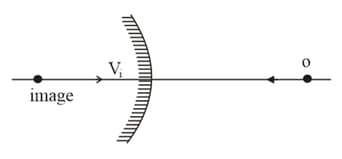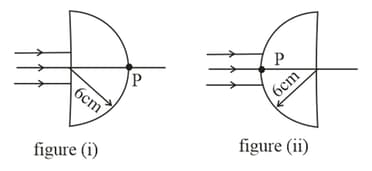Embibe Experts Solutions for Chapter: Ray Optics, Exercise 2: Exercise - 2
Embibe Experts Physics Solutions for Exercise - Embibe Experts Solutions for Chapter: Ray Optics, Exercise 2: Exercise - 2
Attempt the free practice questions on Chapter 30: Ray Optics, Exercise 2: Exercise - 2 with hints and solutions to strengthen your understanding. Alpha Question Bank for Engineering: Physics solutions are prepared by Experienced Embibe Experts.
Questions from Embibe Experts Solutions for Chapter: Ray Optics, Exercise 2: Exercise - 2 with Hints & Solutions
In an experiment to determine the focal length of a concave mirror by the method, a student places the object pin on the principal axis at a distance from the pole . The student looks at the pin and its inverted image from a distance keeping the eye in line with . When the student shifts the eye towards left, the image appears to the right of the object pin. Then,
The distance between an object and its doubly magnified image by a concave mirror is
[Assume focal length]
In cases of real images formed by a thin convex lens, the linear magnification is
directly proportional to the image distance,
inversely proportional to the object distance,
directly proportional to the distance of image from the nearest principal focus,
inversely proportional to the distance of the object from the nearest principal focus.
From these, the correct statements are,
A particle is moving towards a fixed convex mirror. The image also moves. If speed of image and speed of the object, then

A small air bubble is trapped inside a transparent cube of the size . When viewed from one of the vertical faces, the bubble appears to be at from it. When viewed from the opposite face, it appears at from it.
A parallel beam of light is incident normally on the flat surface of a hemisphere of radius and refractive index , placed in the air as shown in the figure . Assume paraxial ray approximation.

A ray is an incident on a refracting surface of refractive index at an angle of incidence and the corresponding angle of refraction is . The deviation of the ray after refraction is given by . Then, one may conclude that
A convex lens and concave lens are kept in contact and the combination is used for the formation of the image of a body by keeping it at different places on the principal axis. The image formed by this combination of lenses can be
